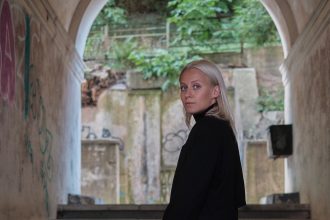“I am proud of all the students,” Stella Justina Kasperavičienė, coordinator of the Fashion Design study program at the Faculty of Arts and Education of the Kaunas College laughs when asked which graduate’s achievements she is most proud of. She opens up that sometimes she has to stay up late with the students at the college. Stella invited me and Arvydas to meet during the summer vacation.
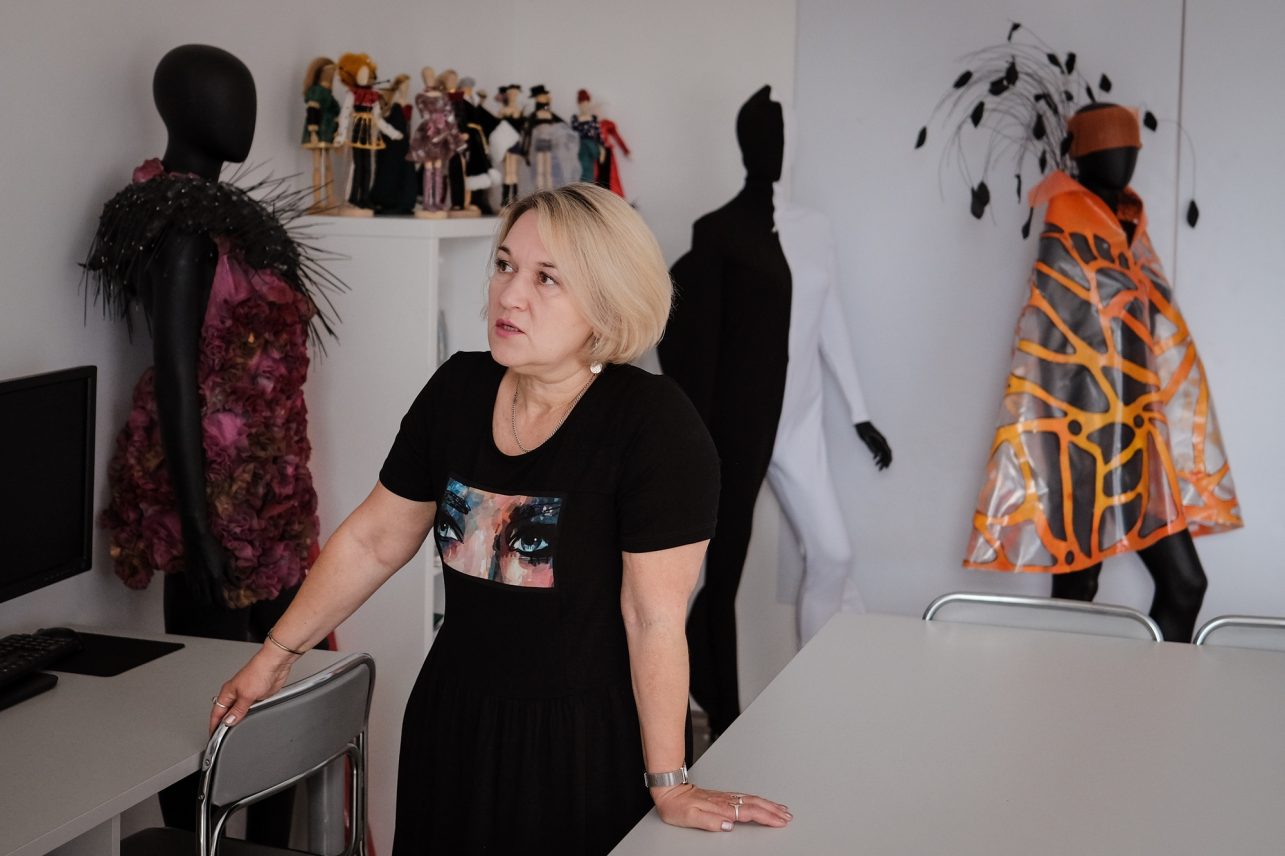
She has been working in this faculty since 1991. Stella was invited to the Kaunas Higher Art School (as it was called at the time) by the long-time lecturer Audronė Šakienė, who also worked at the Kaunas University of Technology, which Stella graduated from already having received a diploma from Vilnius Light Industry Technical School (now Vilnius College). “I work and teach things related to sewing technology, construction, and modeling. I lead internships, and now I am also responsible for the study program,” the interviewer briefly introduces herself.
The forge of future fashion designers in Kaunas has been known as Stepžukis for a long time. In 1940, after Lithuania regained Vilnius, it was decided to move painting, graphics, and sculpture studies from Kaunas Art School, which celebrated its centenary last year, to the capital and to leave the applied arts in Kaunas. During the occupation, various changes continued: the Kaunas Applied Arts High School was moved to Owl Hill, which became Stepas Žukas Applied Technical School in 1959. Hippies were really showing off their regime-unfriendly fashionable silhouettes – students of all majors had a sense of style. As for the late Soviet period, it is necessary to mention Juozas Statkevičius, who was persuaded to enter Stepžukis by his mother’s co-worker at the Pranas Zibertas silk combine. “I know that Juozas finished his studies in this building, but he started on Kapsų Street,” S. Kasperavičienė says and shares the stories of her colleagues about students who crowded around the smoky stove in a wooden house near Zanavykai market, put on fingerless gloves and sewed and knitted to no end…
And this building on A. Mackevičius St. 60 is a testament to the late interwar period. As I was told by the guide dr. Marija Oniščik, Lithuanian Girls Education Society – a congregation of female nuns whose center was in Panevėžys – purchased a plot here in 1939. In June of the same year, they applied for permission to build a three-story brick house designed by Stasys Giedrikas. The guide noticed that the layout suggested it might have been a girls’ school.
In Soviet times, a medical institution operated here, and now it’s where designers are learning their craft. The first and second floors are dedicated to interior design and graphic art and the third one to fashion. Windows and balconies reveal wonderful views of the center of Kaunas and Aleksotas. They would inspire anyone! The spacious auditoriums are empty, and the sewing machines are silent (after all, it’s mid-July). Mannequins, hangers, dresses, coats, and jackets are lined up next to them and the walls are covered in impressive pictures from photo shoots and posters of the Apkalbos fashion show. When taking a walk there, it is easy to remember that A. Mackevičius Street was once named after Italy. And indeed, it does look a bit like Florence.
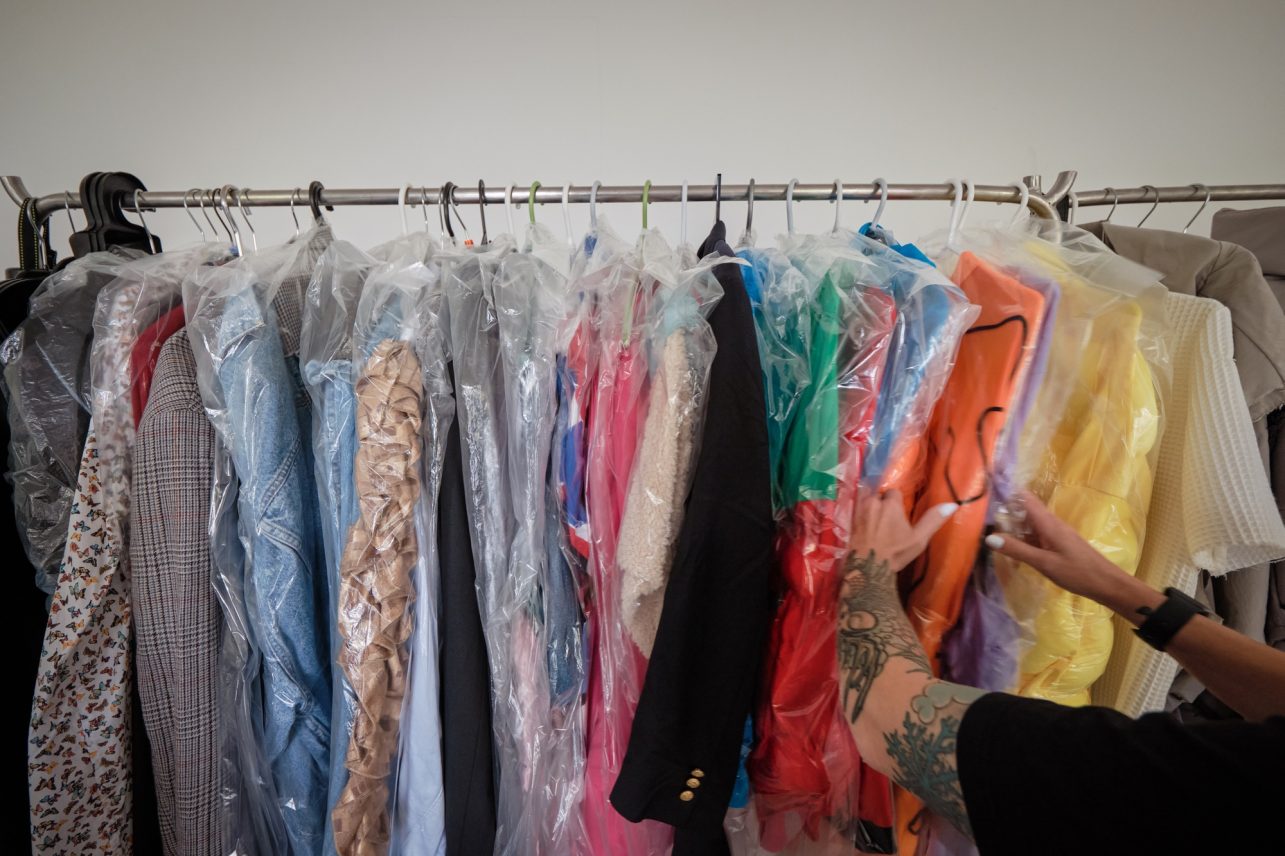
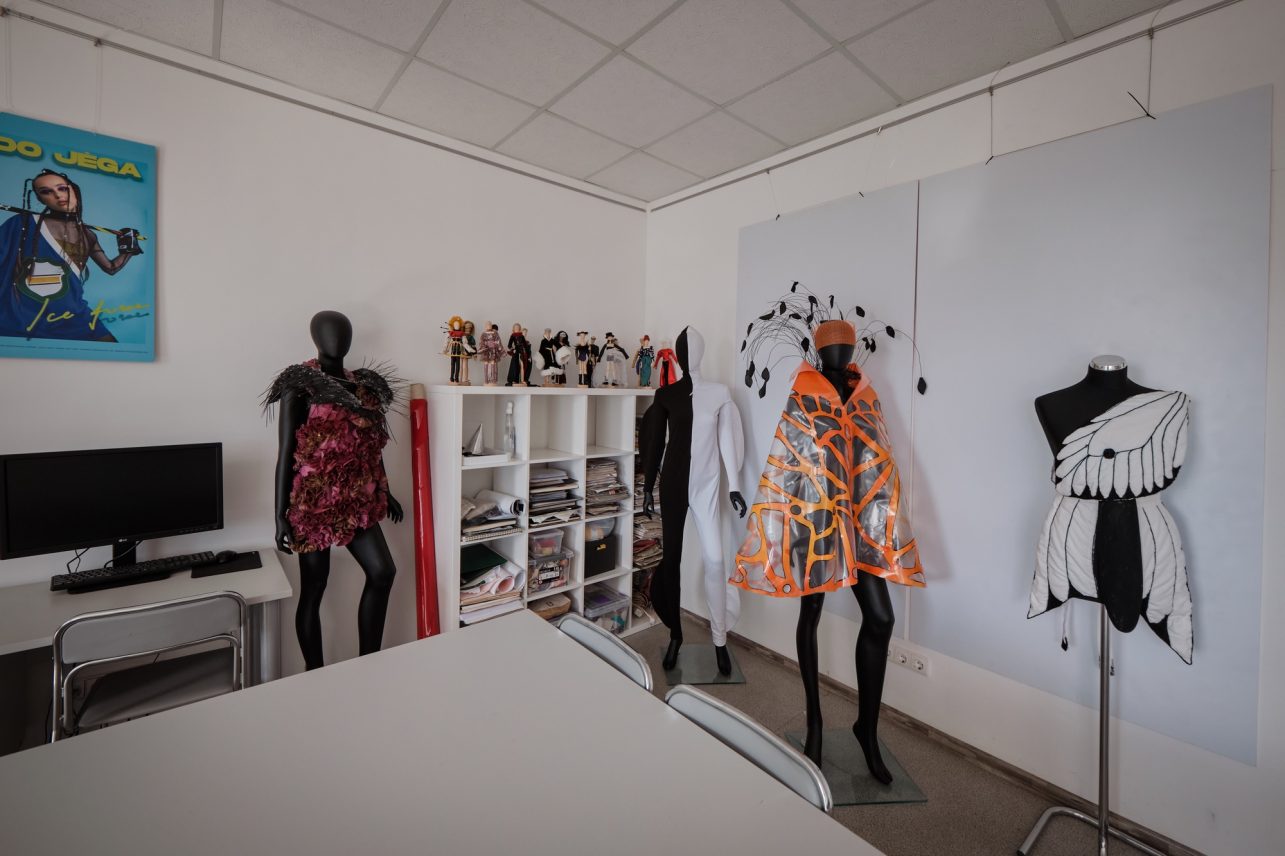

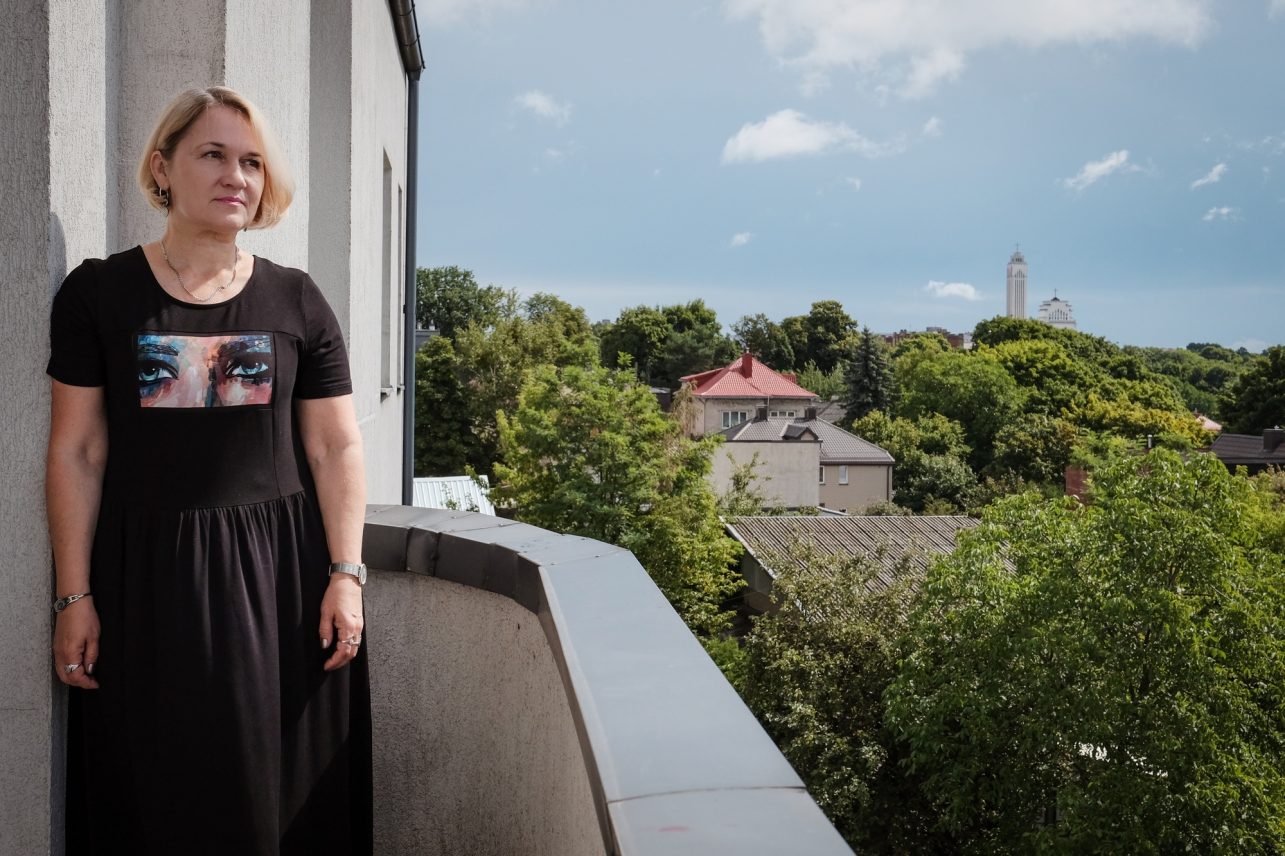
Stella, how many students are there on the third floor?
Usually about ten enrolled in our program. About half would from Kaunas, the rest are from all over Lithuania. In recent years, we have also had 19 people per program. That many students are hard work. The specialty is difficult, everyone needs individual attention, so we divide students into groups to make it easier to work.
The absolute majority are girls, now there were no boys in the first and second years, but for several years before that, we had one or two. The already mentioned Juozas Statkevičius, the late Andrius Sergejenko, Rimvydas Birštonas, Egidijus Rainys, and the late Egidijus Sidaras are among our alumni. And there were so many women that I don’t even know where to begin. We had Sandra Straukaitė, Vida Simanavičiūtė, Kristina Kruopienytė, Kristina Kalinauskaitė, Laura Dailidėnienė, Toma Miller…
Do students bring personal visions to college? Maybe some of them were creating fashion before they enrolled.
There are some highly motivated people with many ideas that we want to hear. There are also those who only discover themselves during their studies. Studying with us is difficult, the workload is high. You also need to love sewing – it is a craft that requires care, attention, and patience. But it is not necessary to already know how to do this when enrolling. During three years of study, everyone learns how to do it and implements their final projects from A to Z. Of course, those three years are just the beginning, you still need to work a lot. Gifted and creative ones continue their studies at the Vilnius Academy of Arts, others immediately create their own brands, yet others find work in companies that often turn to us for employees. Our former students also work in other fields. Currently, our study program lasts 3,5 years. We have strengthened the marketing classes, which distinguishes us from other colleges and provides the students with more opportunities when looking for their place in the industry.
You are probably wondering why those who dream of creating fashion choose this program. After all, there are opportunities elsewhere in Lithuania, and even in Kaunas.
Perhaps they are attracted by the location, Žaliakalnis. They also learn about famous alumni. Maybe they also hear that it has excellent professors, we are definitely proud of that. And that includes all other subjects, not just art-related ones. Or maybe our fashion show Apkalbos attracts them because it allows students to present their work while studying. No other college does this, not even the academy has such an event.
Apkalbos has been taking place since 1998. Students came up with this event. Those teachers who taught Statkevičius, Straukaitė, and Simanavičiūtė kept telling stories about the students holding fashion shows in the college hall back in those days. Then the class of Sidaras, Rainys, Lina Kriaučeliūnaitė, and Audronė Indreliūnaitė decided they also wanted such a show. The first one took place in our small yard – they took out the tables, put up the boards… I was terrified of how they would walk on that self-made fashion runaway. The collections were worn and presented by themselves or friends. Later we moved to the central building of the Academy of Arts, where the gallery now operates. A few years later, we went to the city center – Apkalbos took place in Ex-it club. In its old location, next to Kaunas Castle on A. Jakšto Street. The owner was always happy to receive us. Later the show took place in Combo, Los patrankos, and Gargaras, and this year, Apkalbos took place in Sala restaurant of Žalgiris Arena. The students really want to showcase their work, and the number of collections is increasing each year. Now, we even have to have a selection process and that also motivates people. Not only the final projects are shown, first-year students also participate.
What about those who lack motivation and want to quit? Do you try to help them?
We have to. After all, the workload is high, there are some difficult moments. First of all, such students need to calm down. We tell them that everything is possible and can be implemented. My office is open to those looking for advice and moral support. And the entire college is open – students have the opportunity to work on-site, staying late if necessary. Yes, there are those who decide to take a break, and later, after a gap year and internship – we suggest such students take on an internship position in a company to figure out if they really want this profession – they return with new energy.
(Arvydas asks) And does it happen that you feel like nothing will come of the student but in the end, they surprise you?
Oh, that’s usually the case [laughs]!
You mentioned the equipment but what about the materials? Does the creator of the future collection have to take care of it themselves?
Yes. Therefore, this specialty is not only difficult but also expensive. But also, this is a matter of imagination and creativity. There’s a lot you can do on a small budget, too. Students also do a lot of work with fabric design. They create patterns, sublimate, decorate, tear, embroider, and crinkle. In this way, it is possible to create an effect with an inexpensive fabric. And in second-hand clothing stores, you can find things that suit you, that will give birth to new models. We encourage you to think about sustainable fashion beyond the financial aspect.
You cannot have a collection without a photo shoot. Are the future photographers studying on Owl Hill help with that?
Not only them but also students from the Image Design program. Make-up, hairstyle, photo shoot idea – students have a successful cooperation.

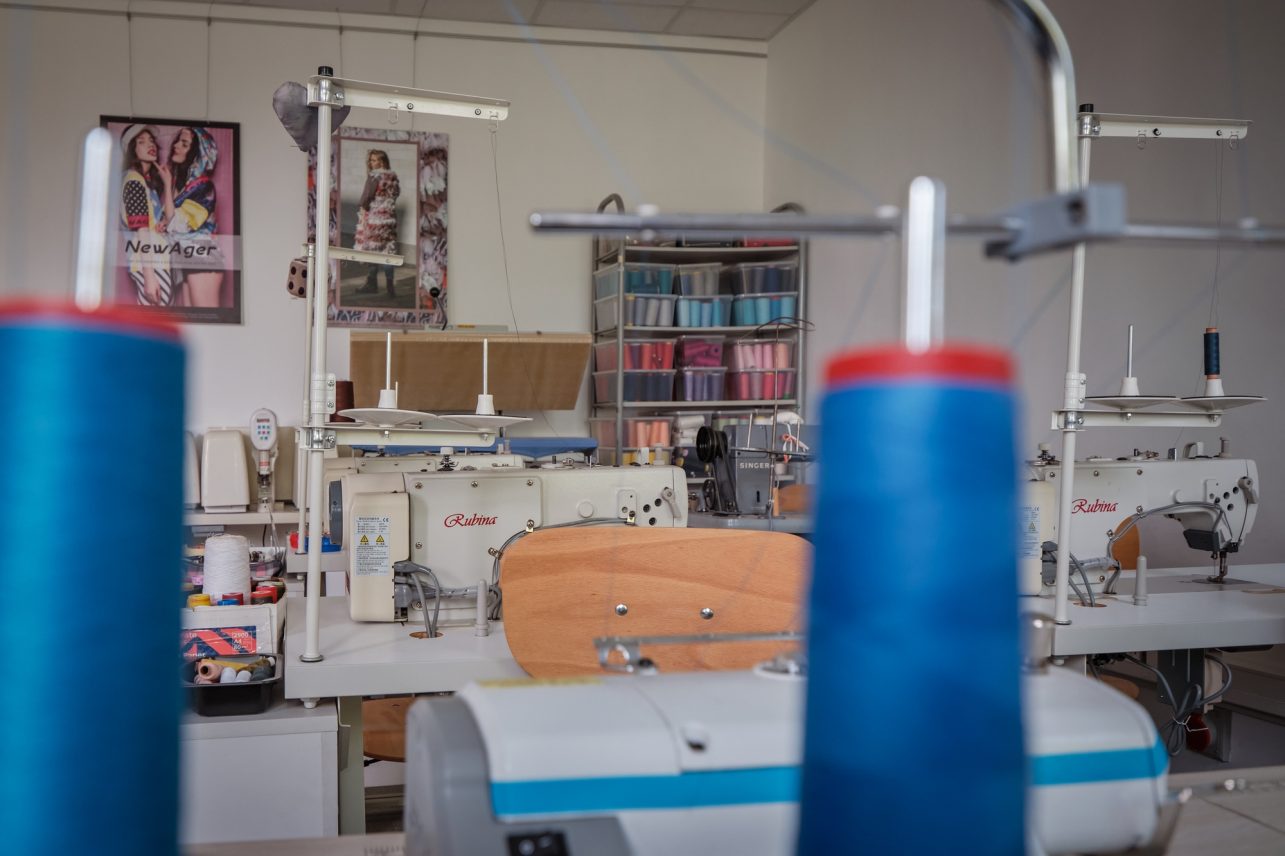
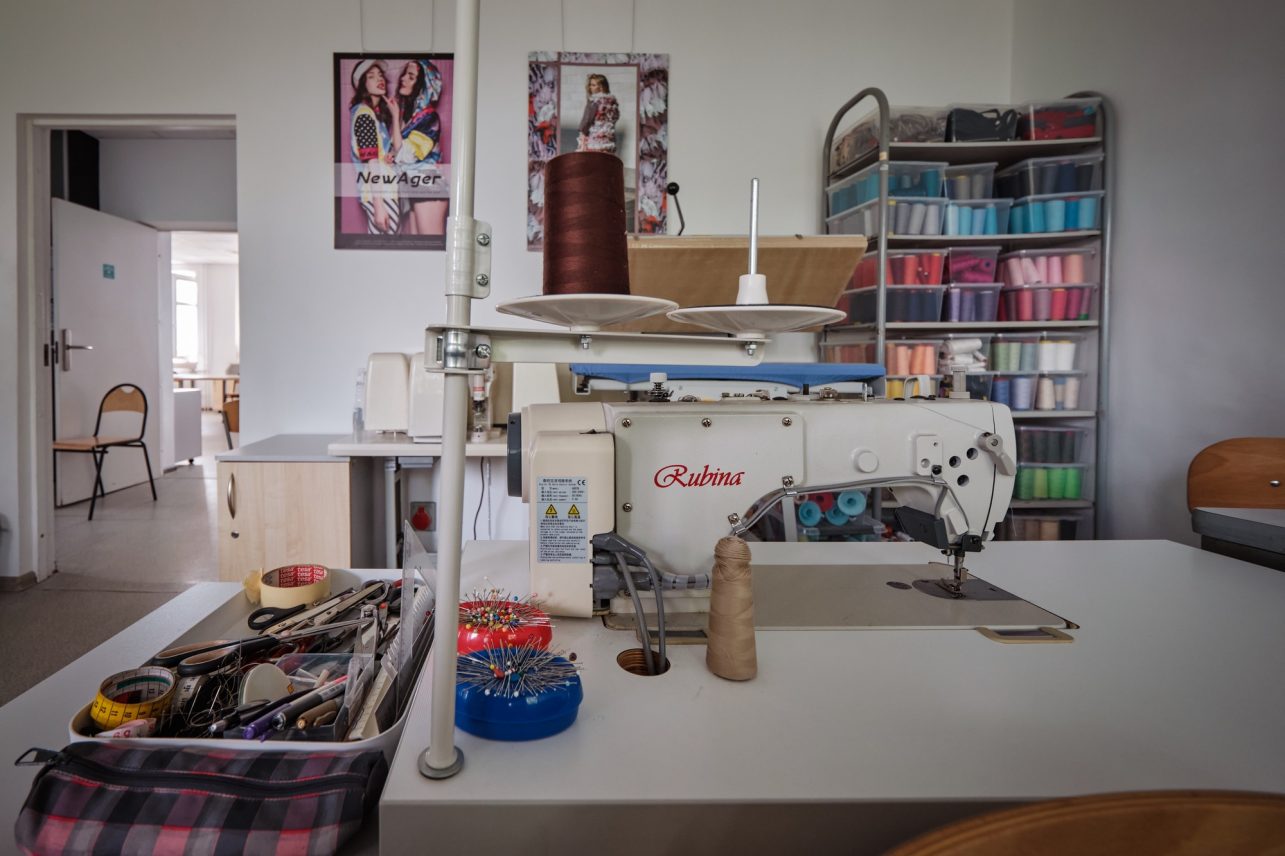
Do older people, who have decided to change their career, enroll in your college?
Of course. I can mention Violeta Dobrovolskienė, who works for us as the coordinator of the Image Design program.
She graduated from fashion design here, worked in the field of image design, and became a lecturer with us. She enrolled when she had two children, then gave birth to a third one and graduated at the top of her class. This is the best example for those who can’t find motivation. Or Jūratė Vaškienė, founder of the Epici brand. She became our student at the age of 40, having completed her master’s studies elsewhere. She was also at the top of her class and created a collection each year. Jūrate’s works were evaluated by television stylists, who, by the way, always follow our Facebook and Instagram pages.
Fashion is global but what about these studies? Do you have students from abroad?
They come through exchange programs. Last year we had two students from India and one of them showed some models during Apkalbos show. He said that he could not show such models at home. We cooperate with Turks, Latvians, Finns, and Cypriots. I get nice feedback, former students even invite me to meet them, I guess that means they liked it here and liked us. I believe that many people remember not only the high quality of studies, and fellow students, but also the environment itself. They visit the park next to the central building on Owl Hill and say, “How nice it is to study here.”
Our students and professors also go elsewhere. It is always nice to hear their impressions when they come back. For example, Italian schools, in comparison to ours, lack both attention to students and equipment. As far as my impressions abroad, I have to say that we are not doing worse than elsewhere, although we are used to beating ourselves up about how poor we are. This is definitely not the case; everything is fine with Lithuania and our people.
I remember two Turkish women who came under the Erasmus program. They wanted to make quilted coats. They sang and did many other things to finish the task! They told the professor that they will die after finishing because it was that difficult. And a few years ago, we met one of them in Turkey, Eskişehir, where she works as a teacher. So, she did survive!



